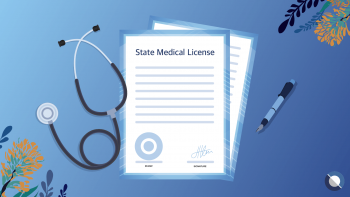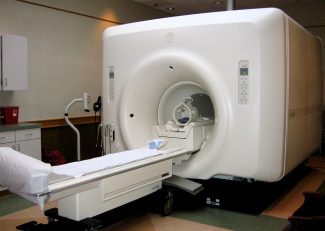 For various reasons, licensed medical providers may choose to voluntarily surrender their state medical license. Earlier this year, our healthcare and business law firm blogged about the repercussions of voluntarily surrendering a state medical license on the physician’s Medicare enrollment. Our firm recently had success in challenging a Medicare MAC’s decision to revoke a client’s Medicare enrollment based on a voluntary surrender of a medical license, resulting in the rescission of the revocation decision. Another usually unexpected repercussion may also be ineligibility for Board examination or loss of Board Certification status. Losing board certification or being found ineligible for board certification is a serious matter with potentially far-reaching adverse consequences. This post outlines the American Board of Internal Medicine’s (“ABIM”) eligibility rules and steps to challenge such a decision. If you have questions regarding this blog post or wish to discuss an adverse decision by the ABIM or strategize ways to overcome an adverse decision, you may contact us at (404) 685-1662 (Atlanta) or (706) 722-7886 (Augusta), or by email, info@littlehealthlaw.com. You may also learn more about our law firm by visiting www.littlehealthlaw.com.
For various reasons, licensed medical providers may choose to voluntarily surrender their state medical license. Earlier this year, our healthcare and business law firm blogged about the repercussions of voluntarily surrendering a state medical license on the physician’s Medicare enrollment. Our firm recently had success in challenging a Medicare MAC’s decision to revoke a client’s Medicare enrollment based on a voluntary surrender of a medical license, resulting in the rescission of the revocation decision. Another usually unexpected repercussion may also be ineligibility for Board examination or loss of Board Certification status. Losing board certification or being found ineligible for board certification is a serious matter with potentially far-reaching adverse consequences. This post outlines the American Board of Internal Medicine’s (“ABIM”) eligibility rules and steps to challenge such a decision. If you have questions regarding this blog post or wish to discuss an adverse decision by the ABIM or strategize ways to overcome an adverse decision, you may contact us at (404) 685-1662 (Atlanta) or (706) 722-7886 (Augusta), or by email, info@littlehealthlaw.com. You may also learn more about our law firm by visiting www.littlehealthlaw.com.
Articles Posted in Physician Practices
Federal Telemedicine Rules
 Many of our healthcare and business law firm’s clients have an interest in offering a practice that offers more flexibility to patients when it comes to in-person versus virtual visits. Deciding to offer telemedicine visits to your patients not only requires acquiring a video product that satisfies HIPAA and other privacy requirements but requires compliance with numerous laws at the state and federal level. This post analyzes potentially relevant federal laws and rules that currently apply during the Public Health Emergency (“PHE”). A subsequent post will provide an overview of state law considerations. If you have questions about telemedicine rules or would like to discuss this blog post, you may contact our healthcare and business law firm at (404) 685-1662 (Atlanta) or (706) 722-7886 (Augusta), or by email, info@littlehealthlaw.com. You may also learn more about our law firm by visiting www.littlehealthlaw.com.
Many of our healthcare and business law firm’s clients have an interest in offering a practice that offers more flexibility to patients when it comes to in-person versus virtual visits. Deciding to offer telemedicine visits to your patients not only requires acquiring a video product that satisfies HIPAA and other privacy requirements but requires compliance with numerous laws at the state and federal level. This post analyzes potentially relevant federal laws and rules that currently apply during the Public Health Emergency (“PHE”). A subsequent post will provide an overview of state law considerations. If you have questions about telemedicine rules or would like to discuss this blog post, you may contact our healthcare and business law firm at (404) 685-1662 (Atlanta) or (706) 722-7886 (Augusta), or by email, info@littlehealthlaw.com. You may also learn more about our law firm by visiting www.littlehealthlaw.com.
State laws provide the majority of laws and regulations governing telemedicine visits. There are, however, two potentially relevant federal rules that a medical practice should consider before offering telemedicine: Medicare rules and the Ryan Haight Act. Continue reading ›
3 Compliance Questions to Ask Before Opening a Medical Spa as a Non-Physician
 We have seen a continued growth in the popularity of medical spas despite the hurdles presented by the COVID-19 pandemic. See Unpacking the Success Factors of the Medical Spa Industry During the Pandemic, Forbes (May 21, 2021). Medical spas present unique compliance challenges from determining whether certain aesthetic services are considered the practice of medicine in the state to whether non-physicians can own the practice. This blog post outlines 3 compliance questions every potential non-physician medical spa owner should ask. If you have questions regarding this blog post or need counsel navigating the complex rules and regulations for opening or operating a medical spa, you may contact us at (404) 685-1662 (Atlanta) or (706) 722-7886 (Augusta), or by email, info@littlehealthlaw.com. You may also learn more about our law firm by visiting www.littlehealthlaw.com.
We have seen a continued growth in the popularity of medical spas despite the hurdles presented by the COVID-19 pandemic. See Unpacking the Success Factors of the Medical Spa Industry During the Pandemic, Forbes (May 21, 2021). Medical spas present unique compliance challenges from determining whether certain aesthetic services are considered the practice of medicine in the state to whether non-physicians can own the practice. This blog post outlines 3 compliance questions every potential non-physician medical spa owner should ask. If you have questions regarding this blog post or need counsel navigating the complex rules and regulations for opening or operating a medical spa, you may contact us at (404) 685-1662 (Atlanta) or (706) 722-7886 (Augusta), or by email, info@littlehealthlaw.com. You may also learn more about our law firm by visiting www.littlehealthlaw.com.
- The procedures I plan to offer are aesthetic, so do I really need a physician involved?
The CMS Vaccine Mandate: Are Boosters Required?
 Our previous blog post provided an overview of the Centers for Medicare and Medicaid Services’ (“CMS”) Vaccine Mandate and addressed two basic questions of the mandate: What providers are covered and what’s the timeline to comply? Many of our healthcare and business law firm’s clients have additional questions about the requirement of CMS’ vaccine mandate (a.k.a. the “federal healthcare worker vaccine mandate”). One such question is: Does the mandate require individuals to receive a booster shot to comply with the mandate? This blog post outlines CMS’s current stance on the booster requirement. As always, the analysis herein is current as of the date this blog is posted and subject to change as agencies and courts release new decisions.
Our previous blog post provided an overview of the Centers for Medicare and Medicaid Services’ (“CMS”) Vaccine Mandate and addressed two basic questions of the mandate: What providers are covered and what’s the timeline to comply? Many of our healthcare and business law firm’s clients have additional questions about the requirement of CMS’ vaccine mandate (a.k.a. the “federal healthcare worker vaccine mandate”). One such question is: Does the mandate require individuals to receive a booster shot to comply with the mandate? This blog post outlines CMS’s current stance on the booster requirement. As always, the analysis herein is current as of the date this blog is posted and subject to change as agencies and courts release new decisions.
If you have questions regarding this blog post or the applicability of state and federal regulations to you or your medical practice, you may contact us at (404) 685-1662 (Atlanta) or (706) 722-7886 (Augusta), or by email, info@littlehealthlaw.com. You may also learn more about our law firm by visiting www.littlehealthlaw.com.
SHORT ANSWER: The CMS Vaccine Mandate does not require individuals to receive booster shots or additional doses in addition to the primary vaccination series, but that may change. Continue reading ›
The CMS Vaccine Mandate: What Providers are Covered and What’s the Timeline to Comply?
 Many of our healthcare and business law firm’s clients have questions about whether CMS’ vaccine mandate (a.k.a. the “federal healthcare worker vaccine mandate”) applies to their workforce. The vaccine mandate landscape is evolving. For instance, the OSHA vaccine mandate applicable to 100+ employee-businesses was overruled by the Supreme Court. The analysis herein is current as of the date this blog is posted and subject to change as agencies and courts release new decisions.
Many of our healthcare and business law firm’s clients have questions about whether CMS’ vaccine mandate (a.k.a. the “federal healthcare worker vaccine mandate”) applies to their workforce. The vaccine mandate landscape is evolving. For instance, the OSHA vaccine mandate applicable to 100+ employee-businesses was overruled by the Supreme Court. The analysis herein is current as of the date this blog is posted and subject to change as agencies and courts release new decisions.
If you have questions regarding this blog post or the applicability of state and federal regulations to you or your medical practice, you may contact us at (404) 685-1662 (Atlanta) or (706) 722-7886 (Augusta), or by email, info@littlehealthlaw.com. You may also learn more about our law firm by visiting www.littlehealthlaw.com.
The CMS Vaccine Mandate
CMS’ vaccine mandate requires all staff at Medicare and Medicaid-certified provider facilities, except for those with approved medical or religious exemptions, to be vaccinated. The mandate is still being tested in court however, the Supreme Court has preliminarily agreed with the federal government that the mandate is valid and has ruled that the mandate is in effect now, pending further litigation. As such, the CMS vaccine mandate is now active.
The Anti-Kickback Statute’s Rules on Per-Use or Per-Click Rental Equipment Leases
 Many of our healthcare and business law firm’s clients are in the business of renting expensive medical equipment for use by medical practices. Generally, these arrangements raise compliance questions under the Physician Self-Referral Act, referred to as Stark Law, and the Anti-Kickback Statute (“AKS”). Should a regulator find an arrangement violates either law, the consequences are severe. The perhaps unfortunate truth is that rarely can a sincere and analytical attorney tell you with confidence that an arrangement does or does not violate either law. The analysis usually places an arrangement on a scale of low to high risk of noncompliance. To assist in understanding whether an arrangement complies with Stark Law and AKS, the rules provide specific exceptions and safe harbors, respectively. Both Stark Law’s exceptions and AKS’s safe harbors outline ways in which an equipment rental agreement may satisfy the protections. One question that frequently arises with our clients is whether they can structure an equipment rental agreement to have a per-use (often called a “per-click”) payment term, wherein there is no set monthly amount but, rather, the lessee pays the lessor a predetermined amount for each time the equipment is used.
Many of our healthcare and business law firm’s clients are in the business of renting expensive medical equipment for use by medical practices. Generally, these arrangements raise compliance questions under the Physician Self-Referral Act, referred to as Stark Law, and the Anti-Kickback Statute (“AKS”). Should a regulator find an arrangement violates either law, the consequences are severe. The perhaps unfortunate truth is that rarely can a sincere and analytical attorney tell you with confidence that an arrangement does or does not violate either law. The analysis usually places an arrangement on a scale of low to high risk of noncompliance. To assist in understanding whether an arrangement complies with Stark Law and AKS, the rules provide specific exceptions and safe harbors, respectively. Both Stark Law’s exceptions and AKS’s safe harbors outline ways in which an equipment rental agreement may satisfy the protections. One question that frequently arises with our clients is whether they can structure an equipment rental agreement to have a per-use (often called a “per-click”) payment term, wherein there is no set monthly amount but, rather, the lessee pays the lessor a predetermined amount for each time the equipment is used.
In this blog post, we outline the basic rules for equipment rental agreements under AKS and whether per-click payment terms satisfy AKS’s Equipment Rental safe harbor. Continue reading ›
Stark Law’s Rules on Per-Use or Per-Click Rental Equipment Leases
 Many of our healthcare and business law firm’s clients are in the business of renting expensive medical equipment for use by medical practices. Generally, these arrangements raise compliance questions under the Physician Self-Referral Act, referred to as Stark Law, and the Anti-Kickback Statute (“AKS”). Should a regulator find an arrangement violates either law, the consequences are severe. The perhaps unfortunate truth is that rarely can a sincere and analytical attorney tell you with confidence that an arrangement does or does not violate either law. The analysis usually places an arrangement on a scale of low to high risk of noncompliance. To assist in understanding whether an arrangement complies with Stark Law and AKS, the rules provide specific exceptions and safe harbors, respectively. Both Stark Law’s exceptions AKS’s safe harbors outline ways in which an equipment rental agreement may satisfy the protections. One question that frequently arises with our clients is whether they can structure an equipment rental agreement to have a per-use (often called a “per-click”) payment term, wherein there is no set monthly amount but, rather, the lessee pays the lessor a predetermined amount for each time the equipment is used.
Many of our healthcare and business law firm’s clients are in the business of renting expensive medical equipment for use by medical practices. Generally, these arrangements raise compliance questions under the Physician Self-Referral Act, referred to as Stark Law, and the Anti-Kickback Statute (“AKS”). Should a regulator find an arrangement violates either law, the consequences are severe. The perhaps unfortunate truth is that rarely can a sincere and analytical attorney tell you with confidence that an arrangement does or does not violate either law. The analysis usually places an arrangement on a scale of low to high risk of noncompliance. To assist in understanding whether an arrangement complies with Stark Law and AKS, the rules provide specific exceptions and safe harbors, respectively. Both Stark Law’s exceptions AKS’s safe harbors outline ways in which an equipment rental agreement may satisfy the protections. One question that frequently arises with our clients is whether they can structure an equipment rental agreement to have a per-use (often called a “per-click”) payment term, wherein there is no set monthly amount but, rather, the lessee pays the lessor a predetermined amount for each time the equipment is used.
In this blog post, we outline the basis rules for equipment rental agreements under Stark Law and whether per-click payment terms may satisfy Stark Law’s Rental of Equipment exception. Our next post will analyze the same question under AKS. If you have questions regarding this blog post or wish to evaluate the risks in your equipment lease arrangement, you may contact us at (404) 685-1662 (Atlanta) or (706) 722-7886 (Augusta), or by email, info@littlehealthlaw.com. You may also learn more about our law firm by visiting www.littlehealthlaw.com.
Georgia Medical Board July Monthly Meeting Minutes Review
 Welcome to the third installment of our business and healthcare law firm’s monthly medical board meeting review, focusing on the Georgia Composite Medical Board (“Medical Board” or “GCMB”). As a healthcare law firm with physician clients, it is our duty to stay up to date with the Medical Board’s positions and changes so as to better inform our clients. If you have licensing or other GCMB questions or would like to discuss this blog post, you may contact our healthcare and business law firm at (404) 685-1662 (Atlanta) or (706) 722-7886 (Augusta), or by email, info@littlehealthlaw.com. You may also learn more about our law firm by visiting www.littlehealthlaw.com.
Welcome to the third installment of our business and healthcare law firm’s monthly medical board meeting review, focusing on the Georgia Composite Medical Board (“Medical Board” or “GCMB”). As a healthcare law firm with physician clients, it is our duty to stay up to date with the Medical Board’s positions and changes so as to better inform our clients. If you have licensing or other GCMB questions or would like to discuss this blog post, you may contact our healthcare and business law firm at (404) 685-1662 (Atlanta) or (706) 722-7886 (Augusta), or by email, info@littlehealthlaw.com. You may also learn more about our law firm by visiting www.littlehealthlaw.com.
The Medical Board met on July 1, 2021 via video teleconference. The July monthly meeting minutes are available here. The Medical Board also publicly releases public orders and agreements each month.
Meeting Minutes
The Rules Committee reported the following rules for comments:
Rule 360-5-.02 “Qualifications for Physician Assistant Licensure”
Rule 360-5-.06 “Renewal of Physician Assistant License”
Rule 360-35-.01 “Definitions” (Lasers)
Rule 360-35-.05 “Practice”
Direct Primary Care Practices in Georgia: History, Rules, and Other Considerations
 Direct primary care practices have become popular alternatives to the traditional insurance medical practice model. Direct primary care practices cut out insurance companies from the provider-patient relationship. This post intends to outline the recent history of direct primary care in Georgia and the relevant rules that practices must comply with to establish a direct primary care practice. If you have questions regarding this blog post or migrating to a direct primary care practice, you may contact us at (404) 685-1662 (Atlanta) or (706) 722-7886 (Augusta), or by email, info@littlehealthlaw.com. You may also learn more about our law firm by visiting www.littlehealthlaw.com.
Direct primary care practices have become popular alternatives to the traditional insurance medical practice model. Direct primary care practices cut out insurance companies from the provider-patient relationship. This post intends to outline the recent history of direct primary care in Georgia and the relevant rules that practices must comply with to establish a direct primary care practice. If you have questions regarding this blog post or migrating to a direct primary care practice, you may contact us at (404) 685-1662 (Atlanta) or (706) 722-7886 (Augusta), or by email, info@littlehealthlaw.com. You may also learn more about our law firm by visiting www.littlehealthlaw.com.
History: Senate Bill 18 in 2019
In 2019, Georgia became the 26th state to designate in its insurance code that Direct Primary Care practices are “not insurance” by passing Senate Bill 18. At the time, 3.2 million Georgians were living in areas facing a severe physician shortage. Dubois & Mesa, SB 18 – Direct Primary Care, Ga. St. Univ. L. Rev., Vol. 36:1, p. 136 (2019). In supporting the bill, Senator Kay Kirkpatrick said:
It is a way for people who can’t afford high dollar plans to get the majority of their care handled for a reasonable and predictable amount of money and is also a way for people to keep their primary care doctor if they change plans or if their doctor is not in their insurance network.
Dubois, SB 18 – DIRECT PRIMARY CARE, p. 136. Continue reading ›
3 Considerations Before Opening a Ketamine Clinic in Georgia
 Ketamine is a substance growing in popularity as a treatment for, among other things, depression and pain management. Ketamine clinics are quickly increasing in popularity. Why Ketamine-Assisted Therapy Has Gone Mainstream, Forbes (Oct. 18, 2021). Our healthcare and business law firm assists clients in understanding the rules and requirements around opening and operating Ketamine clinics, understanding the unique issues that face innovative clinics where no clear guidance or oversight has yet been established. With this post, Little Health Law intends to present three considerations for a provider thinking about opening a Ketamine clinic in Georgia. If you have questions regarding this blog post, opening a Ketamine clinic, or operating your existing Ketamine clinic, you may contact us at (404) 685-1662 (Atlanta) or (706) 722-7886 (Augusta), or by email, info@littlehealthlaw.com. You may also learn more about our law firm by visiting www.littlehealthlaw.com.
Ketamine is a substance growing in popularity as a treatment for, among other things, depression and pain management. Ketamine clinics are quickly increasing in popularity. Why Ketamine-Assisted Therapy Has Gone Mainstream, Forbes (Oct. 18, 2021). Our healthcare and business law firm assists clients in understanding the rules and requirements around opening and operating Ketamine clinics, understanding the unique issues that face innovative clinics where no clear guidance or oversight has yet been established. With this post, Little Health Law intends to present three considerations for a provider thinking about opening a Ketamine clinic in Georgia. If you have questions regarding this blog post, opening a Ketamine clinic, or operating your existing Ketamine clinic, you may contact us at (404) 685-1662 (Atlanta) or (706) 722-7886 (Augusta), or by email, info@littlehealthlaw.com. You may also learn more about our law firm by visiting www.littlehealthlaw.com.
 Little Health Law Blog
Little Health Law Blog

